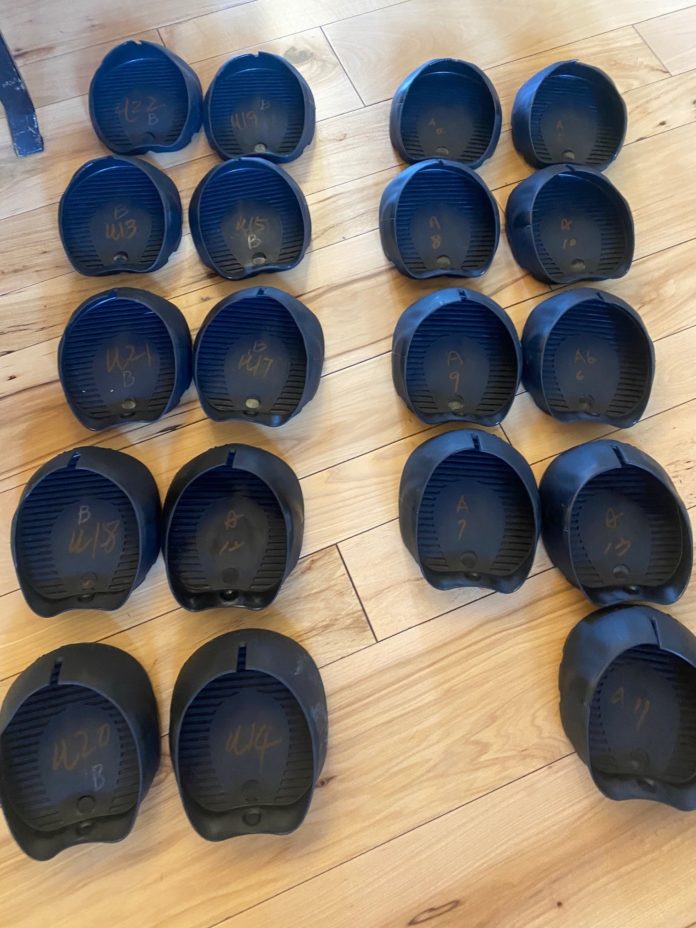The urethane blend currently used to make EasyCare’s boots and shoes is no longer available. We have roughly one year’s worth of inventory already made with this discontinued urethane blend, and we are now in the testing phase to find a new urethane material that we can use going forward. EasyCare has had to switch materials several times in the last 50 years and it always involves a great deal of testing and time on a horse. Although we can start with polyurethane spec sheets, we end up molding the products in several different types of materials and then putting lots of miles and hours on them to see how they hold up.
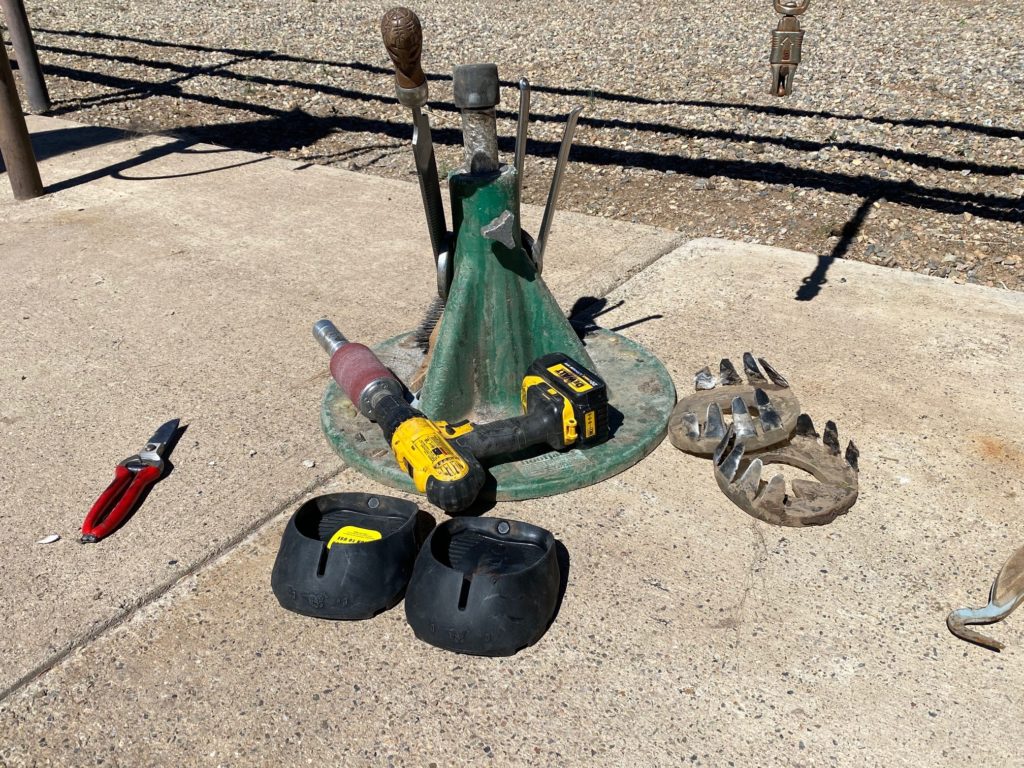
EasyCare has been manufacturing hoof protection products in urethane since 1970. Over these last 51 years, we have learned a lot about urethane. We have learned how it absorbs concussion, how it wears, how it adheres to adhesives, how it grips different surfaces, and more. All of these characteristics are very important, and they all need to be considered. A material that has great shock absorption qualities may be too soft and grippy. A material that is harder may wear longer, but is too slick on pavement or asphalt. Or the perfect material may wear well, have the right grip and right shock absorption, but won’t work with adhesives. There’s a lot to consider.
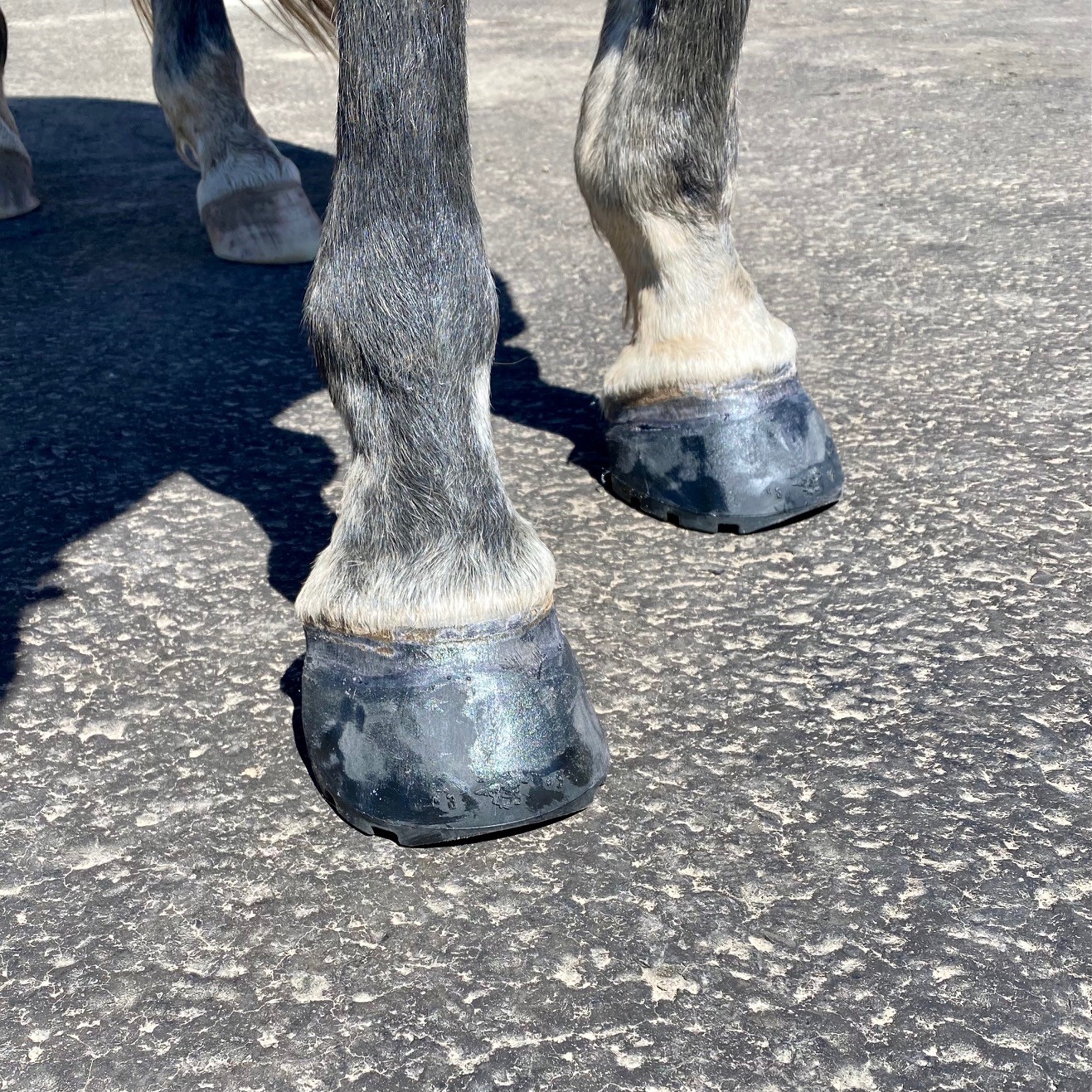
Here is a quick lesson on a couple of things we look for when selecting a polyurethane for hoof protection.
1. Durometer. “The durometer is the international standard for the hardness measurement of rubber, plastic, and other non-metallic materials. Durometers are described in the American Society for Testing and Material specification ASTM D2240, which is the recognized specification for the instrument and test procedures.” Hard materials are slick on asphalt and rocks. Soft materials are too grippy and don’t have the slide we are looking for. We prefer a durometer that is slightly softer than the durometer of the equine foot. There is a sweet spot we look for.
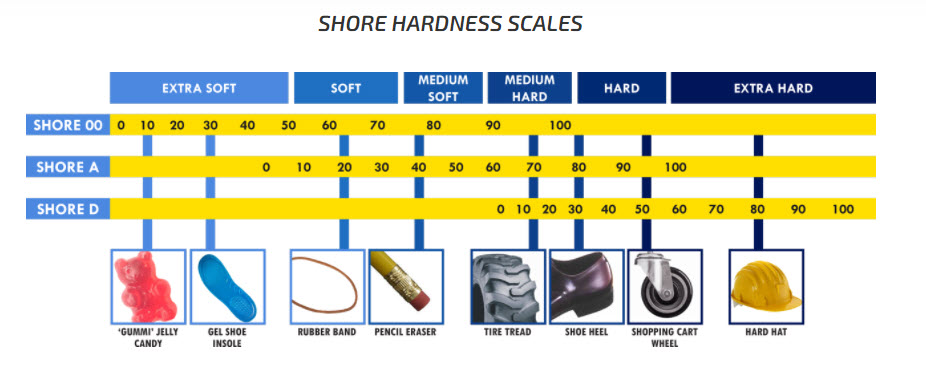
2. Abrasion. The Taber Abrasion Test (ASTM D 1044-78) measures the material’s resistance to wear/abrasion by rubbing or scraping. The Taber Test involves two abrasive wheels that are lowered onto the specimen, and as the platform rotates, the test material begins to abrade away and wear marks become visible. This measurement is very important when it comes to hoof protection. Every time the hoof hits the ground, material is lost and wear occurs. We have found that a Taber of 30-35 is a good place to start. The spec sheets are just a starting point, though. We find that we need to make products in several different types of urethane and then hit the trail. We usually have the horse wear the current/known material on one hoof and the new material to be tested on the other hoof. After a couple hundred miles, we have conducted our own real-world Taber test.
3. Adhesion. Many of our hoof protection products are applied with adhesives. It’s very important that the adhesives sold in the hoof care industry stick well to our urethane boots and shoes. The challenge is the adhesives on the market are all very different. The hoof care industry has urethane, acrylic, and cyanoacrylate adhesives, and it’s important to find a product that works well with all of these adhesives.
We have some time to find our next material, but we need to start testing now. It’s a good thing EasyCare owns a nice group of horses, and we have rough, beautiful country to ride in.
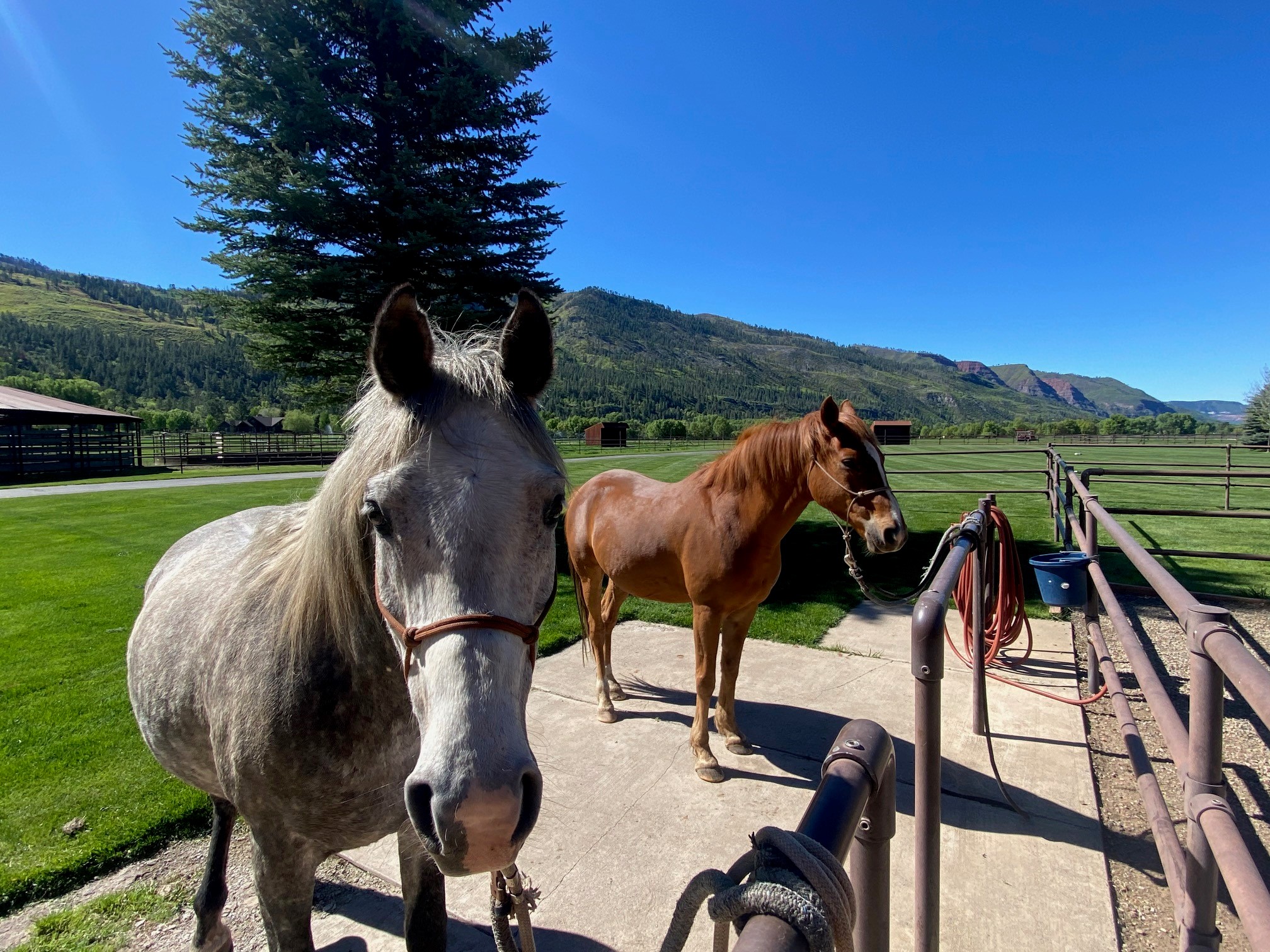
As better and better materials are produced, we will most likely find a product that wears longer, makes the horse more comfortable, and works with the adhesives hoof professionals use.


